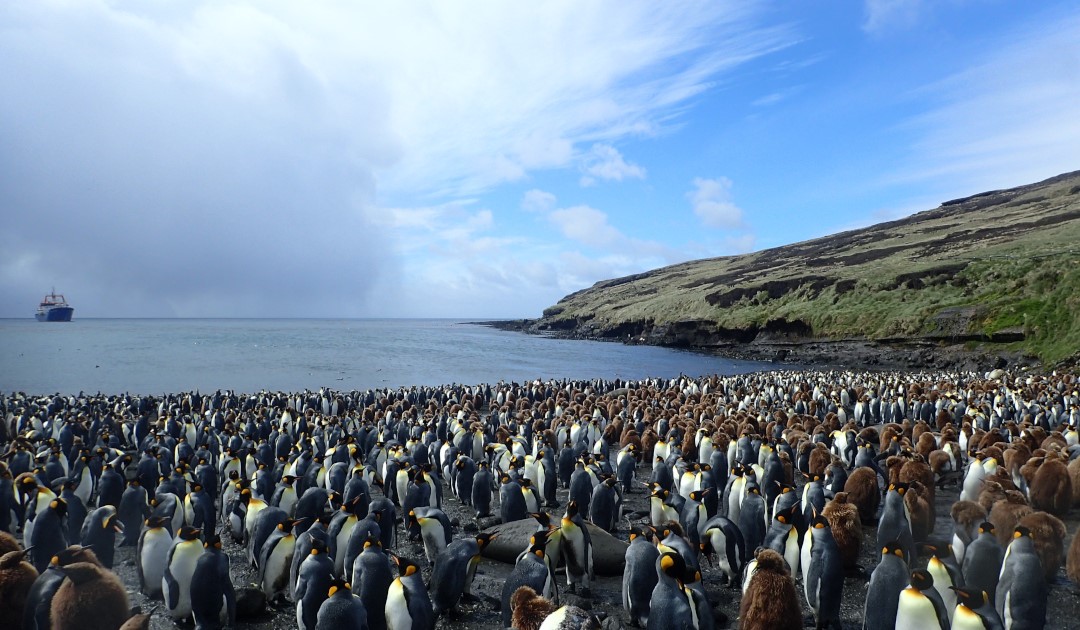
Penguins are suspected of using the Earth’s magnetic field to orient themselves underwater, much like a navigator with his compass. They would gain time to leave for sea areas rich in prey or return with a full crop.
If we wake up at 3 a.m. and our bed has changed orientation during the night, we are disoriented. The penguins don’t lose their way in the dark. At the end of their hunt, at a depth of hundreds of meters, they are able to reach the surface of the water by following an established course, that of the polar front – a zone of convergence of ocean currents, nutrients and animals. According to Charles-André Bost, director of research at the French National Centre for Scientific Research, this allows them to gain precious time to reach the large schools of lanternfish.
We can read this since March 9th in Marine Biology, where a Japanese-French research team hypothesizes that these birds would be sensitive to the Earth’s magnetic field. As for some migratory birds which would be able to see the magnetic intensity. The study focuses on king penguin colonies in the Crozet Archipelago, southeast of the Cape of Good Hope.
There at 46° south, close to the polar front, the adults have no time to lose. As soon as they lay their eggs, the pairs alternate their hunting trips and go back and forth to their favorite areas, dense with prey. “These birds depend on lanternfish that migrate between the bottom during the day and the surface at night. The penguins don’t see them well, because they hunt by sight. At depth, we think they spot them by their bioluminesce”, explains Charles André-Bost.

Although some species of penguins work schools of fish in groups, the king penguin appears to have an effective individual strategy. It hunts during its journey towards the polar front as soon as it crosses a rich area of biomass. “With each dive, it adjusts his strategy according to the size and depth of the bank. If it is very interesting, it breathes for less time at the surface and descends with more slope, faster. Incredible physiological capacities allow him to stay as long as possible at the bottom. Then, it comes back up faster” describes Charles André-Bost.
At this very moment, the swimming bird turns back to the polar front without wasting a second. This behavior raises questions among specialists. These penguins could take advantage of the terrestrial magnetism. “They have no visual cues underwater, such as the sun or stars that they use at the surface. The front is usually 350 km away and sometimes up to 600 km. They also use currents between eddies that break away from the great southern convergence as an indicator of the direction of the front. On the other hand, when they return, they break away from it and go straight ahead. They are great patrollers.”

According to the researcher, these penguins learn about the fishing areas progressively. “We’ve already deployed beacons on young people. At first, they don’t go especially to the polar front, but to the west. They explore their whole space,” he notes. In adulthood, trips should be much shorter. “The king penguin must replenish its reserves after a long period of juvenile life. It then stores up to 3 kilos of predigested food in its crop, which it absolutely must bring back in time to the chick. It is therefore in their interest to have a close and predictable source of food. The prey concentrations in the south are two, two and a half days away,” he notes.
Lanternfish are not yet commercialized on a large scale. Some fisheries are working on this in the Persian Gulf or in the Red Sea. “It is the main unexploited fish biomass in the world. It will come one day in international waters,” thinks the researcher, who has contributed with his scientific knowledge to the management of toothfish fisheries around the French archipelagos.
Camille Lin, PolarJournal
Learn more about this topic:





